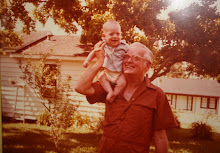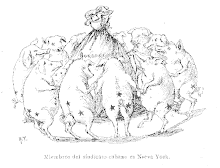There was a time when “terrorist” was a neat, nuance-devoid category that needed little supplementary explanation. As Hollywood-contrived eccentrics, terrorists existed as mere foils—a quintessential badness whose abhorrent existence merely reinforced the most elementary understanding of good, justice, and the American way. Their motives were rarely explored, their background only partly fleshed out.
Much of this neatness was a product of general American ignorance on the subject of terrorism. What was a terrorist? What did they do? Well, for American audiences in the 80s and 90s, they hijacked planes, blew up buildings, murdered people, and rooted for Armageddon. But, they did all of this stuff far, far away. It was this geographical and intellectual distance between the activities of terrorists and life in the US that fostered an image of terrorism that was as readily identifiable as it was patently false—a silk suit wearing, gulfstream-flying, impenetrably nonsensical lunatic like Castor Troy (Nick Cage) in “Face Off”; the cold, expressionless master criminal in “Passenger 57,” the fanatical IRA splinter groups in “Patriot Games.”
In the eighties—when everyone was luvin’ Reagan, hatin’ commies, and laying roses at the feet of rugged individualism—the Hollywood image of terrorism served to highlight bureaucratic incompetence. Maj. Scott McCoy (Chuck Norris) knew exactly how to handle a group of sweaty highjackers in “The Delta Force”—go in and kill the fuck out of ‘em! Without equivocation, without even a hint of grey, the terrorists were evil: pure, concentrated evil. There was no debate about their character, their one-dimensionality was entirely transparent. The only question was whether McCoy would allow a wavering president and a group of Posey-panty Foreign Service officers to keep holding up the show and making deals with terrorists, or whether he would paint their asses red, white and blue. Indeed, what attracted audiences to McCoy-like characters was their ability to cut through the many concentric rings of authority and inaction with a blast of hyper-realism shot through the barrel of a bazooka.
While vestiges of this attitude lingered on, the post-cold-war world brought with it a new understanding of terrorism. The world was different, smaller, more complex. But one thing hadn’t changed; for the American imagination, the battle against terrorism was still being waged internally. The argument, however, was no longer about which should be done first, ask questions or shoot; it was now a struggle to reconcile the actions of the old cold-war embroiled superpower with the new single dominant beacon of democracy. In short, the democracy-praising idealism of President James Marshall (Harrison Ford, “Air Force One”) was created to clean up the mess left by the reckless abandon of Maj. McCoy’s Delta Force.
Throughout the cold war the United States had been fighting for supremacy. Now that it was the unquestionable winner, it had to make a decision. Like Connor McCloud in “Highlander,” we had decapitated our enemies and won the prize. So, now what? Well, we actually get an inkling of what Connor does with his prize in the terrible sequel to “Highlander.” He saves the world from ultra-violet annihilation by constructing a synthetic ozone layer to replace the one destroyed by industry. And, he earns the hatred of billions who now have to live in eternal darkness.
The US of the post-cold-war nineties was in a comparable situation. The Soviet Union had been vanquished for good. The United States had won the prize. And with the prize came the unfettered condemnation of much of the world. Despite its best efforts, the US could neither quell the bitterness nor distance itself from the world it had spent decades creating. In this new light, the terrorists became human. The soldiers in “The Rock” wanted justice; the nuclear bomb carrying Yugoslav in “The Peacemaker” wanted to avenge his fallen wife and daughter. These people had to be stopped, yes. But they also had to be understood. We wanted to know what made them tick. We wanted to ask them, “why all the bitterness?” “Why don’t you forget about those things and take our hand as we walk into the bright new future?”
Yet, no matter how they might have tried, the US could not keep the ghosts of the Cold War in their graves. Osama Bin Laden, a creature of the American desire to spend the USSR out of existence, was back on the scene following the 1998 embassy bombings in Africa. In the wake of that rude awakening, America’s imagined terrorist lost much of his humanity (though not all of it). Interestingly enough, however, this did not bring about a revival of the Maj. McCoy archetype. In fact, these events merely escalated the post-cold war struggle for direction in a Uni-polar world. Now the battle between the ideal US and the ghosts of the past could be fought out in real time and in earnest. In “The Siege,” FBI Special Agent Anthony Hubbard (Denzel Washington) struggles to maintain his composure as he battles both the terrorist cells and the extra-constitutionality of American troops on US soil torturing US citizens. It’s the FBI verses the US military; the symbol of national order verses the symbol of global domination; the clashing interests between the metropole of a reluctant empire and the inevitable byproducts of empire building.
In this instance at least, the ideal US wins. Denzel Washington waves The Constitution in front of Bruce Willis, the soldiers put down their guns, and the president comes back to his senses. Problem averted, order returned, the march toward the future continues. September 11, 2001, however, directs the American gaze back to the mean, mean, complex world. In response to the newly realized international turmoil, Hollywood dispatches Ben Affleck and Morgan Freedman to chase international, nuke-holding terrorists around the world. Samuel L. Jackson decides to think outside the box and hire Vin Diesel to infiltrate a group of well-dressed, curiously wealthy terrorists in Prague. And Arnold Schwarzenegger took matters into his own hands by traveling to Columbia to squash the terrorists’ heads between his large Austrian paws.
But, as always happens during moments of rabid, self-righteous indignation and flag-waving super patriotism, we carried this crusade a little too far. Toward the end of the decade we were being dragged back to our senses by Tommy Lee Jones, Jake Gyllenhaal, and George Clooney. Granted, the “Valley of Elah,” “Rendition,” and “Syriana” all lacked both the hypnotic special effects of a Schwarzenegger film and the cool composure of Morgan Freedman. But the point was made. Fighting terrorists had become a nasty business. It was no longer about just cutting through the red tape to do what had to be done. Things weren’t that simple anymore. We were left asking ourselves, “Was Maj. McCoy even relevant anymore?” Or was he actually the reason we were here in the first place?
The answers to these questions haven’t been filmed yet. But, If the low-budget production, “Unthinkable,” is any indication, we’ve now entered a world of nuanced introspection. In this film about torture and deniability, the terrorist is still human and the threat is still real. But the enemy is no longer so clear or even so tangible. Unlike the final scene in “The Siege,” there is no FBI agent risking life and limb to preserve civil authority. Rather, the tenuous sometimes antagonistic relationship between CIA, FBI and the military has been replaced by an eerie cooperation. Denzel and Bruce have merged into a single character that is not only convinced of what he must do, but he’s tormented by the idea of it, and unsure of where his actions will take him.
But there is one major difference between the old world of terrorists in foreign, dusty countries and the new world of terrorism inside our heads; terrorism is no longer a temporary emergency. Before, fighting terrorism meant stretching the rules and kicking some ass. But when the fighting was done and the terrorists were hauled off, the sun came out and life went back to normal. This is no longer the case. There is no single person that can be killed, tortured or locked up that will restore order (magically or otherwise). Terrorism is, unfortunately, the new normal. Like domestic abuse, herpes and crack cocaine, terrorism is a problem without a solution; it’s a blister without an ointment. For better or worse, the image of terrorism has been grafted onto our collective consciousness as a permanent, immutable force. We’re stuck with it forever . . . or at least until the next movie.













You know, you can find San Francisco criminal attorney <a
ReplyDeleteReally???? Blog Spam??
ReplyDelete